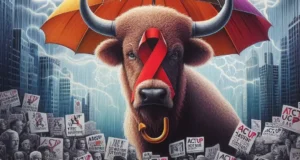Imagine a traveler who arrives in a new village, tired and bruised, looking only for help. Instead of a warm welcome, people close their doors, whisper behind curtains, and avoid even eye contact. This traveler is not carrying a sword or a disease that spreads through the air — he carries HIV/AIDS, and worse than the illness itself is the stigma he now faces.

When we ask “AIDS where did it come from”, our search often leads us to scientific explanations: a virus jumping from primates to humans, possibly in Central Africa during the early 20th century. Migration, medical mishaps, and unawareness helped it spread. But somewhere along this timeline, society added a heavy layer of judgment — and that’s where stigma was born.
Stigma is like a thick fog that doesn’t allow people to see clearly. The virus may be biological, but stigma is psychological, emotional, and deeply cultural. From the very beginning, people asked “AIDS where did it come from?” Early myths tied HIV/AIDS to morality, sin, or specific communities, labeling them unfairly.
It was as if people believed HIV was not just a virus in the blood, but a sign of guilt written on the body.
To understand stigma, think of it like a glass prison — transparent yet strong. The person with HIV/AIDS can see society, but feels separated from it. They are not sick because they want to be; they are sick, yet treated as dangerous. People with other illnesses are embraced, sympathized with — those with HIV are often avoided, judged, or even shunned.
“AIDS where did it come from” may be a medical question, but stigma has turned it into a moral one. Families have disowned members. Employers have quietly refused jobs. Friends have stepped back in fear. And the worst part? Many people suffering from HIV/AIDS start believing the lies — that they are somehow less human, less deserving.

Stigma is a second disease — one that weakens the mind and isolates the heart.
Let’s be honest: the virus spreads through specific means — unprotected sex, shared needles, infected blood transfusions. It cannot be caught by sharing meals, shaking hands, or simply being near someone. Yet even today, outdated beliefs keep the fog of stigma thick and suffocating.
This societal behavior has grave consequences. People avoid getting tested because they fear the label more than the illness. Some choose silence over treatment. Others die quietly rather than face public shame. So when we revisit the question “AIDS where did it come from”, we must also ask: where did this cruelty come from?
Education is our lantern. Empathy is the key. The only way to dissolve this fog is by understanding the science, respecting the facts, and embracing the humanity of those who suffer. HIV/AIDS is a medical condition — not a character flaw, not a punishment, not a curse.
The truth is, HIV can affect anyone — regardless of class, gender, nationality, or background. The virus doesn’t discriminate. But sadly, people do. That’s what stigma is — a human-made poison that continues to infect far beyond biology.
let’s offer more than a history lesson. Let’s explain that while the virus has a biological path, the stigma is a societal invention.




